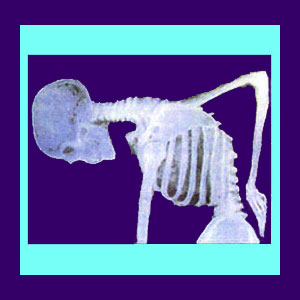
Nutritional kyphosis is a particular type of abnormal kyphotic change caused by dietary and nutritional deficiencies. This condition can be seen in children and adults, but is most prevalent in the elderly. The 2 main sources of nutritionally-based kyphotic change are rickets and osteoporosis. It is crucial to understand that vertebral bones need proper nutrition in order to develop healthily and stay strong throughout the demands of life. When vertebrae are deprived of much needed nutrients, they can change in shape and lose structural integrity, often altering the typical curvature pattern of the spine. This is why nutritional deficiencies can become serious concerns for any affected patient.
This essay delves into the diet-related causes of hyperkyphosis in the thoracic spine and how the condition can be prevented and treated.
Nutritional Kyphosis in Children
In children and young adults, the major cause of hyperkyphosis linked to a dietary source is rickets. This condition comes from a deficiency of vitamin D and is preventable with proper nutritional intake. In some rare cases, congenital and developmental conditions can cause kyphosis which is sometimes mistakenly associated with a vitamin deficiency, when that condition also exists coincidentally.
Most congenital and early developmental curvature conditions are idiopathic in nature, meaning that they come from an unknown source process. In these cases, the kyphosis may not respond to treatment using dietary methods alone and may require further evaluation.
Doctors have learned that many irregular spinal curvatures do have a genetic component and may also be related to specific lifestyle factors demonstrated by the mother during pregnancy. Hopefully, ongoing research will lead to a reduction or elimination of some of these spinal issues through gene therapies and preventative measures.
Nutrition-Related Kyphosis in Adults
In adult and elderly patients, kyphosis is most often linked to low bone density issues which are part of the osteoporosis condition. Some patients develop soft bones which tend to give in to gravity and soft tissue tension, resulting in exaggerated spinal curvatures and sometimes reduced spinal curvature throughout the spine.
Other patients develop wedging of specific vertebrae or even compression fractures which all contribute to thoracic kyphosis when experienced in the upper and middle spinal regions.
Most nutritional forms of kyphosis in the elderly are not painful, although they can be problematic, especially if fractures have occurred. Osteoporosis is certainly a very significant condition which can lead to increased pain later in life and possibly, an early demise.
Nutritional Kyphosis Prevention
Nutritional changes enacting kyphosis can often be prevented by living healthy lifestyle and eating a proper diet. While some people are generically predisposed to developing both rickets and osteoporosis, proper nutrition will usually keep these conditions at bay.
For problematic bone density issues, adding resistance training into a sensible exercise plan earlier in life can be very effective at preventing osteoporosis in old age. To learn more about what you can do to maintain your health and good posture throughout life, talk to your doctor or a qualified nutritionist. Most nutritionally-related structural changes in the spine can be minimized be consuming a balanced diet complete with all the nutrients needed to grow and support a healthy musculoskeletal system.




